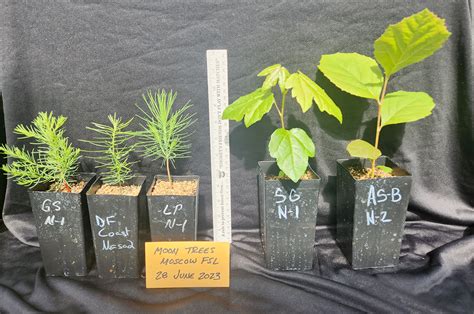The National Aeronautics and Space Administration is looking for community and educational organizations to help cultivate a useful forest of trees with a special heritage: the moon.

NASA and Forest Service offer seedlings to grow Artemis ‘moon trees’ (Photo: collectspace.com)
The National Aeronautics and Space Administration And The USDA Forest Service Are Ready To Begin Distributing Tree Seedlings
The National Aeronautics and Space Administration and the USDA Forest Service are providing educational and civic institutions across the country with “a living piece of spaceflight history” in the form of “a seedling grown from a tree seed that flew around the Moon on NASA’s Artemis I mission.”
According to a news release the space agency issued on Thursday, this is the case.
The campaign aims to increase interest in STEM (science, technology, engineering, and mathematics) subjects.
Sycamores, sweetgums, Douglas firs, loblolly pines, and giant sequoias are among the five species of tree seedlings on the Artemis Moon that were propagated from seeds that had traveled 270,000 miles from Earth onboard the Orion spacecraft during Artemis I in late 2022. Nearly 2,000 seeds, which will shortly be spread across the United States on Earth, are thought to have flown onboard the craft.
READ ALSO: A New Online Crime Reporting System Announce By The Sarasota County Sheriff’s Office
The National Aeronautics and Space Administration Hope That A New Generation Of Moon Trees Will Take Root And Carry On The Legacy
According to NASA, schools, libraries, museums, and others engaging with students or the public are encouraged to apply for a moon tree seedling through The National Aeronautics and Space Administration Artifact Module. Eligible institutions include formal and informal K-12-serving organizations, universities, community organizations, science centers, and government agencies.
Applying for a moon tree seedling through The National Aeronautics and Space Administration Artifact Module is encouraged for educational institutions, libraries, museums, and other organizations that interact with students or the general public. Universities, community organizations, science centers, official and informal K–12 service organizations, and government agencies are examples of eligible institutions.

















































